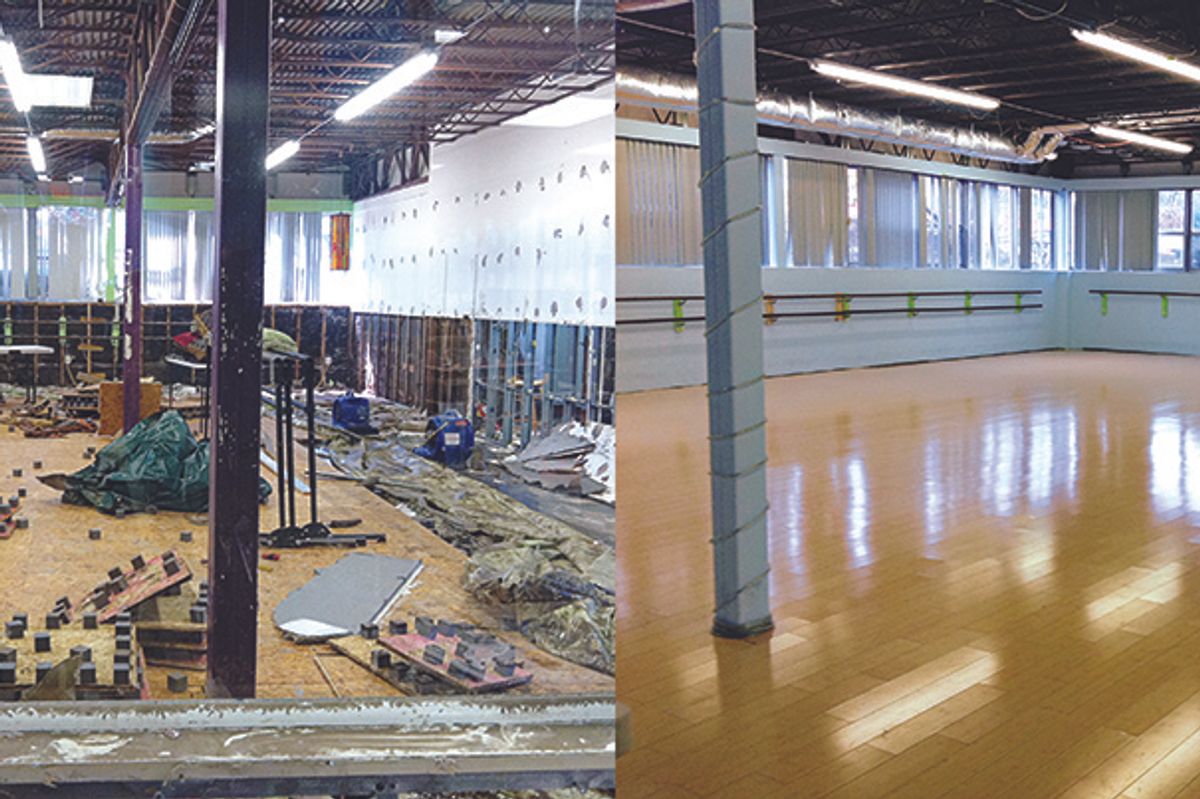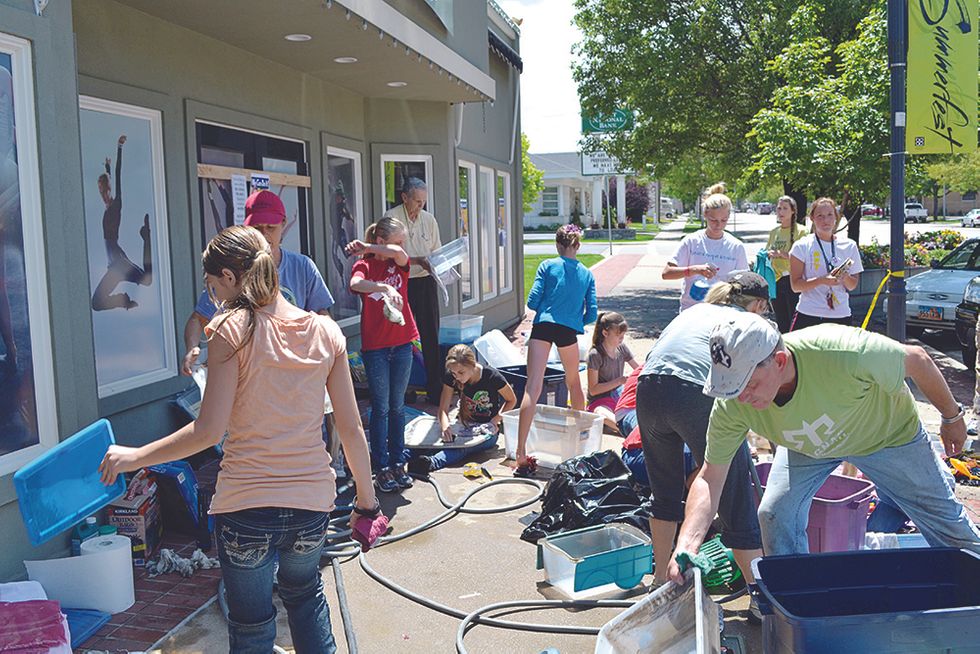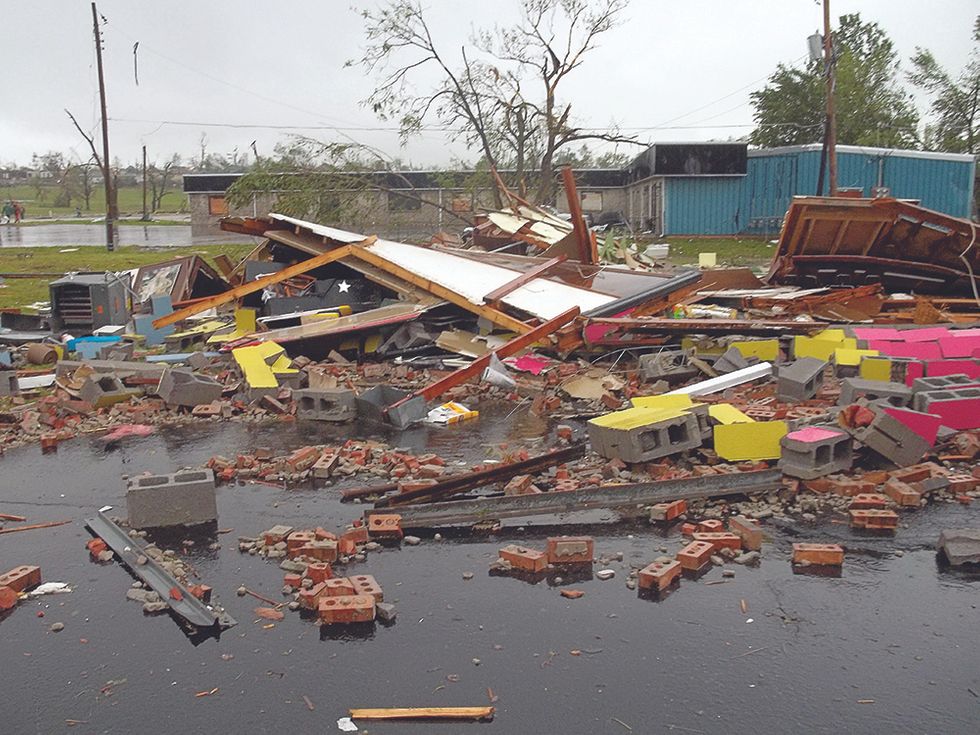
“It was surreal. Seven years of collected painted props, costumes, books, photos from concerts and thousands of dollars of dance apparel and CDs were all gone,” says Jana Monson, whose Creative Arts Academy in Utah burned down last summer. But like other brave studio owners in her situation, Monson was undeterred. “The day after the fire, we made copies of the iconic World War II Rosie the Riveter poster that says, ‘We Can Do It!’ and placed them around the exterior of the building. I wanted my clients to know that we would persevere and overcome this tragedy.”
While all might seem lost in the wake of this kind of devastation, your studio can survive. The key is to be as prepared as possible, never be afraid to ask for help and keep a positive attitude when the dust settles. Here, Monson and two other studio owners share how they revived their businesses after experiencing unexpected disaster.
Preparing for the Unexpected
Melanie Hodges Malone
Danse Elite
200 students
Mamaroneck, NY
When Melanie Hodges Malone moved into her studio space in 2008, she knew it sat in a floodplain. So as last August’s Tropical Storm Irene neared Malone’s Danse Elite, she removed all sound equipment and artwork the day before the storm hit. But that wasn’t enough.
Irene’s heavy rainfall caused six and a half feet of flooding. “When I looked into the window, the whole floor was lifted up because water and mud pushed it up from underneath,” Malone says. “My first thought was, ‘I don’t even know how to come back after this.'”
The building owner’s insurance covered only replacing the walls. Malone didn’t apply for disaster aid because FEMA relief came in the form of small-business loans. Malone didn’t want to borrow from the bank again—she had taken out a loan when opening the studio a few years back. Instead, she paid for the floors and mirrors out of pocket and upped her flood insurance coverage.
The total cost for mirrors alone was $7,000, due to labor—only one mirror had broken, but each time a wall was replaced, all mirrors had to be professionally moved. Replacing the original $24,900 marley and sprung wood floors wasn’t an option because of the high cost and long delivery/installation period. So a student’s father, who ran a contracting company, helped to install a new floor. Other studio families volunteered to scrub mud-caked furniture, paint rooms, rehang pictures and lay carpet squares. After spending $20,000 in repairs, Danse Elite reopened in time for the fall semester.
Malone’s biggest mistake: letting young students see the building in shambles. “The younger dancers were so used to what it looked like before that when they saw it, they were hysterical,” she says. Malone asked parents of young students via e-mail to avoid coming by the studio.
Through it all, Malone gained a deeper awareness of disaster’s unpredictability. In retrospect, she would’ve packed up and removed many costumes and sentimental keepsakes that, because they were placed on top shelves, she didn’t think would be damaged. But Malone is more grateful than ever to have a thriving business and strives not to take anything for granted. “Exhale. It takes a lot of work, but you can come back,” she says.

Creative Arts Academy families rally to help clean up. Photo courtesy of Jana Monson
Rebuilding a Sense of Hope
Jana Monson
Creative Arts Academy
700 students
Bountiful, UT
“Out of this tragedy we will be stronger” was the rallying cry for Jana Monson after her Utah studio, Creative Arts Academy, was damaged in a fire on July 30, 2011. The fire, caused by an HVAC company working on the building, collapsed part of the 100-year-old building’s roof. Jana and her husband, Sean, an attorney in the Salt Lake City area, received a phone call at 2 a.m. from the fire dispatcher’s office. They rushed to the scene to find several fire trucks pumping gallons of water into their studio. Smoke spread for several blocks, making it difficult to breathe, Jana recalls.
Creative Arts Academy was housed in two neighboring spaces; both were damaged: The three studios, office, kitchen and storage area in the building with the collapsed roof (at 185 South Main Street) completely burned down, and the water and smoke ruined two marley floors along with the Brazilian cherry ballroom flooring in their adjacent building at 165 South Main Street.
Instead of completely closing for repairs, Creative Arts continued to operate for the summer session. The Monsons shut down classes held in 185 South Main Street, but they rented four additional temporary spaces—only stopping classes for one week. (165 South Main Street closed for one month.) Approximately 100 classes, and tens of thousands of dollars in contents, were lost.
The Monsons decided to use the opportunity to rebuild 185 South Main Street into Jana’s dream studio. To supplement the fire insurance proceeds and their savings, they secured $750,000 in loans. The new space, which opened this April, has four large studios, waiting and homework areas with built-in counter tops, seating and wi-fi, three storage areas, a main office, a teacher’s area with kitchen and tables, four bathrooms, two dressing rooms and an enclosed glass vestibule where students can safely wait for parents. Marley floors and overhead speakers were installed in all classrooms, and additional speakers run near the entrance outside. Jana’s favorite part: the wall of glass windows modeled after The Ailey Studios in Manhattan.
“You have a choice when this happens: You can either wilt and collapse in a shell of self-pity, or put a positive face forward,” says Sean. “We were able to get through something I never thought we’d recover from, and we are continuing to survive.

Tornado damage at Karen’s Dance Studio, Joplin, MO Photo by Whitney Scott, courtesy of Nicole Drouin
The Power of Community
Nicole Drouin
Karen’s Dance Studio
204 students
Joplin, MO
Nicole Drouin will never forget May 22, 2011. It was the day that an EF5 tornado ripped through Joplin and leveled her 41-year-old family business, Karen’s Dance Studio. Drouin follows the same emergency action plan as local schools—take cover in the safest space—but luckily no one was in the building. The cinderblock and brick storage room that would have been the safe spot wasn’t left standing.
After hearing about Drouin’s misfortune, Ellen Ferreira of Costume Gallery immediately called to offer her help, even though the two had never met. Ferreira rallied the dance community’s support through an e-mail campaign and suggested Drouin set up a relief fund. Area studios volunteered at fundraisers, and studios nationwide used their recitals as benefits. Drouin received hundreds of e-mails from across the country along with boxes of props, costumes, CDs, iTunes gift cards and teaching materials. The local paper gave free advertising space, Stagestep donated new dance floors and monetary gifts secured rented space, scholarships and apparel for students affected by the twister. Drouin estimates that gifts for apparel alone totaled over $20,000.
“When a tragedy hits like that, you go into a numb zone and do what you have to,” Drouin says, adding that her first step was securing a new location. She found an old dance studio about three miles away, though the only parts still in place were the mirrors. Drouin spent approximately $20,000 on remodeling (she turned the single studio into two rooms) and $8,000 on sound systems, barres and decor. Some pieces from the old studio, like the shabby chic waiting room furniture, were refurbished. During renovations, a local dance studio allowed them to rent space for four weeks. The new location opened on September 7, 2011.
“Now, when it gets rainy or dark outside, or the sky looks strange, it’s a whole different ball game,” Drouin says. “We talk to our teachers about remaining calm. We changed our game plan to not just talking about our exit plan, but also about the demeanor while executing it.”
Drouin was moved by the overall compassion of the dance community, and now she donates proceeds from Karen’s Dance Studio recitals to other studios in need. “We have more than recovered from this tragedy,” she says. “The dance community is so passionate, and it’s extraordinary what we can all accomplish.”
Disaster Insurance Primer
- How much coverage do you need? Caitlyn Thompson of Colorado-based Anthony Insurance Services, Inc., says some carriers will take the size of your facility and multiply it by how much new commercial construction costs per square foot. For example, if your facility is 3,000 square feet, and the cost of commercial construction is $100 per square foot, buy $300,000 of coverage. Most policies will cover one year of actual loss sustained with a “business interruption” policy. Thompson also advises to renew policies yearly and/or when significant organization changes occur.
- If you own: Acquire both a casualty policy to cover damages to the building, and a liability policy in case someone were to slip on the sidewalk. Attorney Sean Monson recommends creating two separate business entities for your studio—one that owns the building and one that operates the dance studio that rents from the building. (For the studio entity, take out renters’ insurance for the contents and a commercial liability policy.) When the fire happened at Creative Arts Academy, the building was paid for structural damage, and the studio was paid for a portion of content losses.
- If you rent: Get a policy that covers the loss of contents for barres, mirrors, CDs, costumes, furniture, etc. If your flooring is portable, it can be covered, too. In the event of damages, the landlord is usually only responsible for returning the space to the condition in which it was rented.



